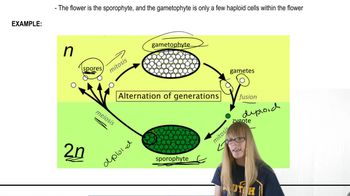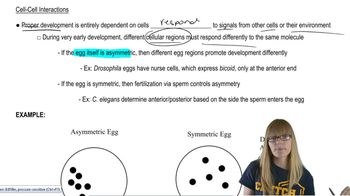Textbook Question
The pair-rule gene fushi tarazu is expressed in the seven even-numbered parasegments during Drosophila embryogenesis. In contrast, the segment polarity gene engrailed is expressed in the anterior part of each of the 14 parasegments. Since both genes are active at similar times and places during development, it is possible that the expression of one gene is required for the expression of the other. This can be tested by examining expression of the genes in a mutant background—for example, looking at fushi tarazu expression in an engrailed mutant background, and vice versa.
Based on your prediction, can you predict the phenotype of the fushi tarazu and engrailed double mutant?
228
views




